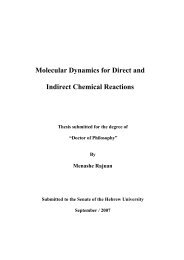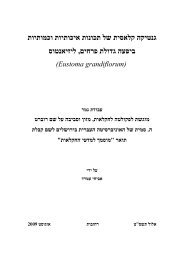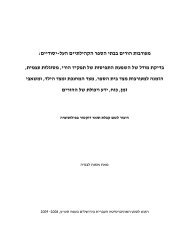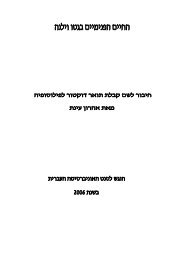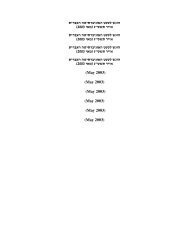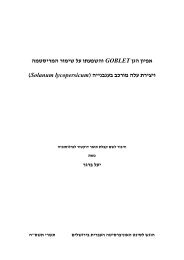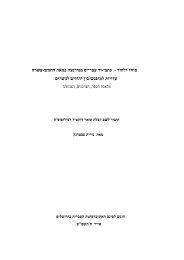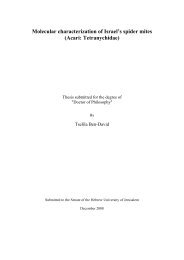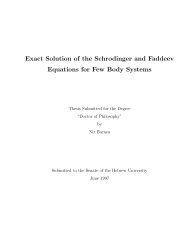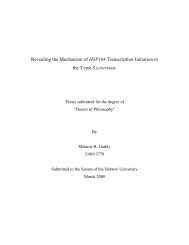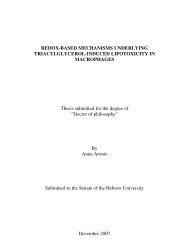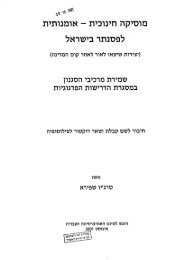××ר×ת ס×פ×ר ×× ×¡ ××קר×× ×××× ×× ××××××ª× ××שר×× - ×××× ××רס××× ××¢×ר×ת ...
××ר×ת ס×פ×ר ×× ×¡ ××קר×× ×××× ×× ××××××ª× ××שר×× - ×××× ××רס××× ××¢×ר×ת ...
××ר×ת ס×פ×ר ×× ×¡ ××קר×× ×××× ×× ××××××ª× ××שר×× - ×××× ××רס××× ××¢×ר×ת ...
You also want an ePaper? Increase the reach of your titles
YUMPU automatically turns print PDFs into web optimized ePapers that Google loves.
and aspire to make the contents of these subjects relevant to students` lives. The key<br />
to influencing teachers to consider new kinds of teaching is to engage them in<br />
reflective thinking about their teaching methods and about other aspects of their<br />
educational situation. If teachers are persuaded that they will have a more beneficial<br />
effect on students and on their religious outlook both in the short and in the long term<br />
if they adopt alternate teaching approaches to the biblical miracle story, they might<br />
agree to enter into a reflective process. Inasmuch as teachers do not naturally or<br />
automatically think reflectively, it is necessary to train them to think in this way, and<br />
we suggest ways of implementing this training, using concrete examples. However,<br />
just as coercion is both ineffective and morally dubious in the teaching of children, so<br />
it is the case in the pre-service or in-service training of teachers; hence teachers must<br />
be addressed in language that corresponds to their thinking patterns and worldview.<br />
The key to doing this in the mamad is to present a range of traditional Jewish sources<br />
that (a) advocate innovative thinking, and (b) incorporate in their exegesis metaphoric<br />
and dialogic approaches to the biblical text.<br />
In the final stage of the paper, we demonstrate how reflective thinking can be<br />
applied to the three hermeneutical options posited in the previous chapter.<br />
Representatives of the commonplaces scrutinize the various readings in order to<br />
ascertain their appropriatenes for the teachers, students, and milieu of the mamad.<br />
They determine (a) the hermeneutical underpinnings and assumptions of each option<br />
as applied to the particular story under discussion, (b) the theological message of each<br />
approach, (c) the learning skills that might be acquired from the adoption of each kind<br />
of reading. On this basis they will make a judgment as to the usefulness of each<br />
approach in the educational setting of the mamad. In order to decide upon the final<br />
curriculum, committee members weigh various options, including the adoption of one<br />
324



